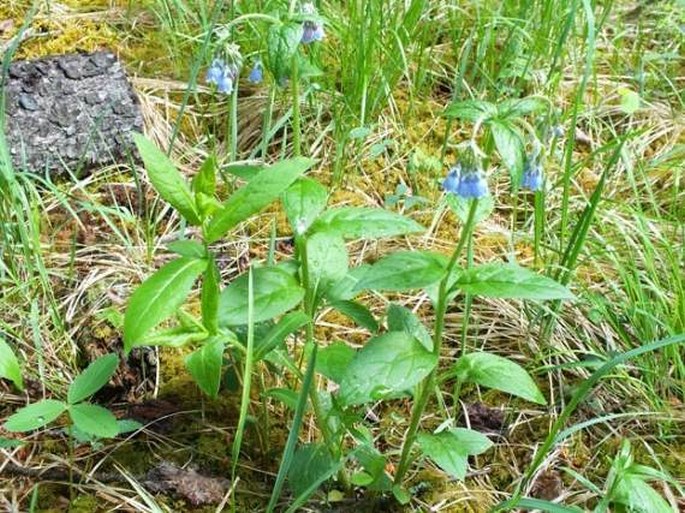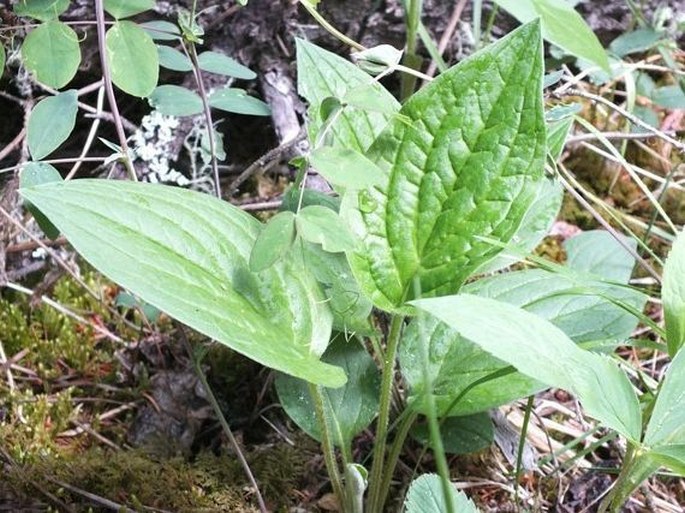Syn.: Cerinthodes paniculatum Kuntze, Lithospermum paniculatum (Aiton) Lehm., Platynema paniculata (Aiton) Schrad., Pulmonaria paniculata Aiton
Family: Boraginaceae Juss.

Distribution: North American species with wide distribution from Alaska and most of Canada. In US it is found in states of Washington, Oregon, Idaho, Montana, Minnesota, Iowa, Wisconsin, Michigan and marginally in Connecticut.
Ecology: Open to deep forests, moist to wet, from foothills to alpine elevations. Blooms from May to July.

Description: Perennial herb, stems 1 to several, 20–80 cm tall, erect, from woody crown or rhizome. Leaves alternate, broadly ovate to lanceolate, cordate at base, 5–15 cm long, conspicuous veins, stiff-hairy, long petioles, progressively smaller and sessile, margins smooth. Inflorescence is a scorpioid cyme, 5–12-flowered; flowers blue, rarely white, buds pink, nodding, campanulate, 8–15 mm long, tubular base shorter than flared part of corolla, pentamerous; sepals green, short, spreading; stamens 5, pistil 1. The fruits are nutlets with wrinkled surface, 2.5–5 mm long, 4 per flower.
Threat and protection: State of Iowa lists this species as endangered.
Note: The genus name honours German botanist Franz Karl Mertens (1764–1831).



These images were taken in Canada, Alberta, Benchlands, Forestry Trunk Road (June 2015).


